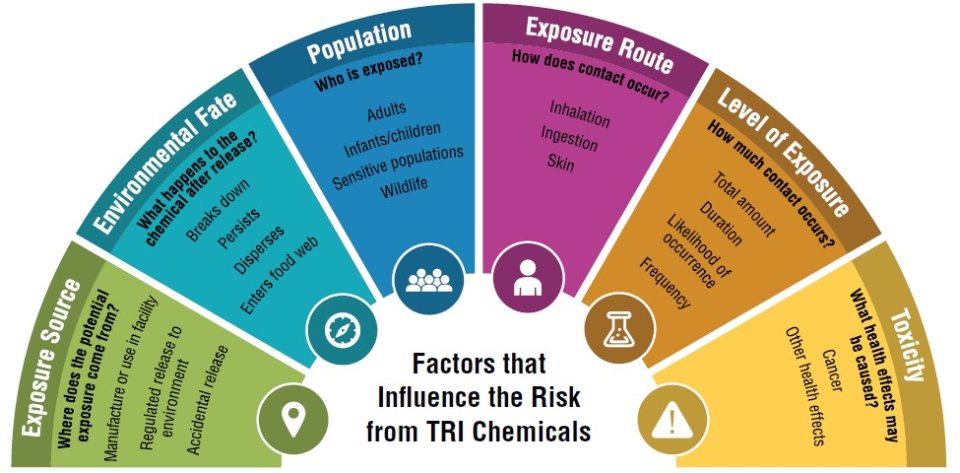TRI for Tribes
Industrial and federal facilities located in Indian country that meet Toxics Release Inventory (TRI) reporting requirements must submit annual data to EPA and the appropriate tribal government entity. EPA makes the TRI data available online. TRI data can help tribes identify sources of toxic chemical releases that may impact the health of their communities, track changes in these releases over time, and prioritize efforts to reduce local chemical pollution.
- How many TRI facilities are on tribal lands?
- How can tribes quickly get TRI information?
- How can tribes access more detailed TRI data?
- Are tribes at risk from toxic chemical releases on or near their lands?
- What help is available for tribes concerned about toxic chemical releases?
How many TRI facilities are on tribal lands?
In 2023, there were:
- 377 facilities located on the lands of 47 federally recognized tribes.
- Collectively, these facilities reported 32 million pounds of chemical releases.
- 2,148 facilities located on or within 10 miles of the lands of 250 federally recognized tribes.
- Collectively, these facilities reported 230 million pounds of chemical releases.
Keep in mind that there may be facilities releasing toxic chemicals on or near tribal lands that were not required to report to the TRI Program in a particular year.
View the list of facilities located on or within 10 miles of tribal lands
How can tribes quickly get TRI information?
The search below provides interactive charts to easily access summary-level data about chemical releases from TRI facilities located on or within 10 miles of tribal lands. If no selections are made, the tool will display national-level data for all tribes.
How can tribes access more detailed TRI data?
TRI Toxics Tracker
Tribes can use TRI Toxics Tracker to:
- map the locations of TRI-reporting facilities on or within 10 miles of their lands,
- view customizable charts showing which tribes have the most facilities on their lands, the largest amount of chemical releases, and other summary-level information, and
- determine if facilities on or near their lands have implemented pollution prevention practices.
TRI Toolbox
Tribes will find other online tools for accessing TRI data in the TRI Toolbox, plus resources for interpreting the data.
Are tribes at risk from toxic chemical releases on or near their lands?
Many factors determine whether or to what extent releases of TRI-listed chemicals pose a risk to human health or the environment. The diagram below summarizes some of these factors.

The TRI has some of the information described in the diagram. The TRI provides estimates of how much of certain chemicals are released into the environment and indicate how those chemicals are managed prior to (or instead of) being released. This information can be used to identify potential toxic chemical hazards near tribal communities; however, release estimates alone are not sufficient to determine exposure or to calculate potential risks to human health and the environment.
You can find out more about TRI and estimating potential risk, or browse Factors to Consider When Using TRI Data.
What help is available for tribes concerned about toxic chemical releases?
Tribal Contacts
- EPA TRI Program Regional Coordinators: Tribes concerned about toxic chemicals released from specific industrial facilities may contact the TRI Coordinator in their region.
- EPA Tribal Program Managers: Tribes are encouraged to contact the Tribal Program Manager in their region with questions about facilities near tribal communities.
- TRI Tribal Contacts: Find the environmental officials designated by federally recognized tribes to receive reporting forms from TRI facilities located on the lands of federally recognized tribes.
Online Tools
- Report Environmental Violations: Tell EPA about suspected violations of environmental laws.
- EPA's Enforcement and Compliance History Online (ECHO) tool: Find out if a facility is in compliance with EPA laws and regulations.
- EPA's Risk-Screening Environmental Indicators (RSEI): The RSEI tool can help your tribe establish priorities for further investigation. RSEI incorporates TRI data on the amount of toxic chemicals released with factors such as the chemical’s fate and transport through the environment, each chemical’s relative toxicity, and potential human exposure.

